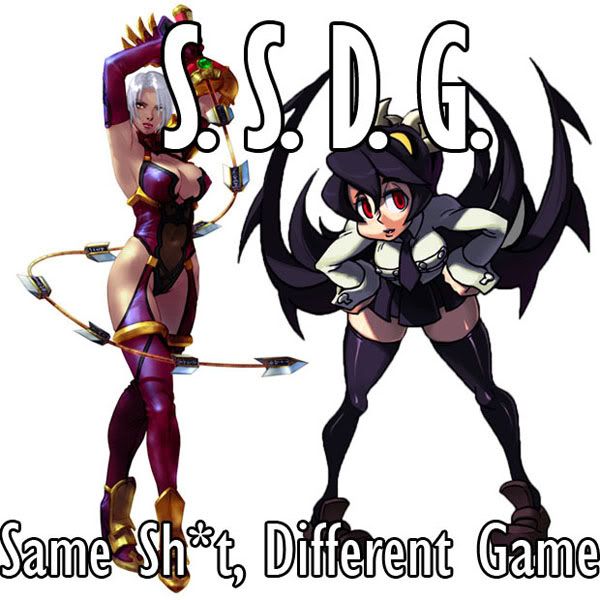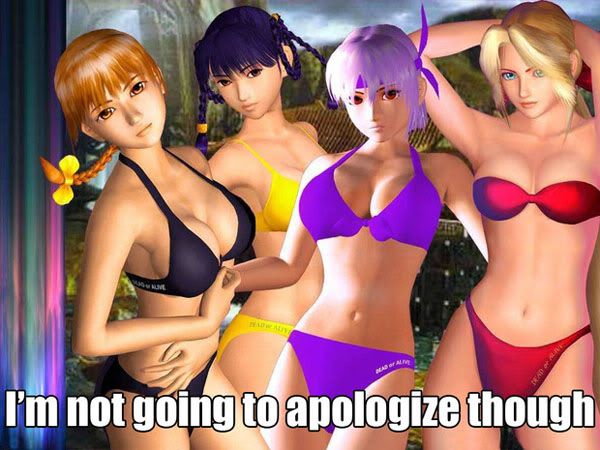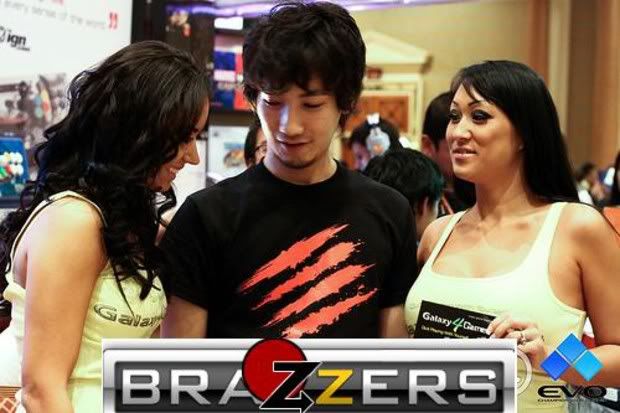This post has not been edited by the GamesBeat staff. Opinions by GamesBeat community writers do not necessarily reflect those of the staff.

The argument of overly sexualized women in video games has never bothered me, but this phenomonen is an especially common thing in fighting games.
Soul Calibur? Let’s just recreate Superman and She-Hulk. Street Fighter? I always find something redeeming about the characters on some level. Dead or Alive? Well, that’s the whole point, of course.
But the argument finally hit me in a way that made me really rethink my position. Someone on tumbler reblogged this simple two-way exchange:
“It’s…pretty damn sexist. Like, seriously. Stop. I know it’s a good game, but no. Bad.”
“No. You are wrong. That is all.”
Skullgirls is special to me because it is a progression of the genre rather than just what a lot of fighting games are: a sequel. Or a sequel that merely builds upon its series but not the genre. Think of the first time you played Street Fighter II or when you first experienced super moves or tag team mechanics. Regardless of how objectively Skullgirls brings new ideas, it undoubtedly meshes them together into a strong, cohesive package (despite its own flaws).
But if one thing will hold back this game, it’s the character designs. Skullgirls features obvious panty shots, and nearly everyone has a well-rounded chest that’d even make the women from Soul Calibur reel in shock. But despite Skullgirls’ choice in design, I don’t want people to just play this game because it’s good. I want people to respect it for what it’s trying to do and not what it’s trying to display.
My god, is this how fans of Dead or Alive feel?

I just can’t defend these depictions of women because I personally find them about as subtle as Ivy Valentine in a string bikini brandishing a can of whipped cream. Every time I win against Parasoul, her things flop up and down upon defeat. I can’t bring myself to defend how the characters are portrayed, and yet, I want people to pick up this game because of how well it blends the six-button fighting scheme with the new era’s mechanics like chain attacks and aerial movement.
Certainly, not every character is hypersexualized. Peacock is a younger girl while Painwheel is more of a frightening monster than a sex object. But seeing the argument made me think about the issue with more forethought then I ever have.
I won’t claim to have thought hard about the issue of the sexual image of women in games; neither will I claim to be entirely interested in the discussion. I’m also not saying I’d wish Skullgirls developer Reverge Labs would change how its characters look because I think that’s the image now, and they have to stick with it. Dead or Alive has never changed in its depiction of women, and it certainly looks like developer Team Ninja will embrace it well in the fifth iteration of the series, which I hate, by the way. Not because of the sexualization of their female characters but because of how much counters seem dependent in any fight.
I can’t make a clear conclusion about how to fix the issue, but I do know one thing for certain about myself: I will make it clear that I do not want any of our female colleagues, friends, daughters, girlfriends, or wives to take any suggestions of body image from Skullgirls.
If you’re comfortable with the issue and how some of Skullgirls’ more prominent characters are more than a bit risqué in their choice of costume, then thank you for being responsible adults about this. Also, in light of the fighting-game community’s (FGC) more controversial eruption earlier this year, I’d hope that the male half of the demographic would not prod the issue like immature high school students. I don’t stand by Aris’s actions, and while he’s made it clear that the FGC really is intertwined with that sort of attitude, that doesn’t make it a good community if it embraces that.
I can’t realistically propose that we approach how we design female characters more tastefully. If I could, I would. But Dead or Alive 5 is clearly on its way, and early indications reveal that its women are still trying to fight as sexily as ever.

Still, after discussing the subject among my peers, I was surprised at the variety of viewpoints on the subject. I think of the issue as a problem, especially when viewed from the outside. I don't want outside media or young girls to see the hypersexualized women portrayed in video games and get the wrong idea. Mainstream press would have a field day, and teenage girls with malleable body images will think they should have hourglass waists and huge breasts. I'm certainly not alone in these worries, but I've found other justiable opinions.
Some counter that (at least for Skullgirls, specifically), hypersexualized women are designed in parody. It certainly isn't a far-fetched idea, as the characters' bodies are never specifically oogled. In fact, many previously sexualized examples like Dead or Alive are paper-thin in presentation. Hitomi from Dead or Alive has an ending that's just her cooking breakfast in tantalizing morning clothes.
But the women of Skullgirls have very specific aspirations when it comes to their goal of obtaining the Skullheart, a monkey's-paw-like relic that's at the center of the game's story. Despite their outward designs, the characters aren't actually objectified and are empowered by their unique backgrounds.
Even Street Fighter is just a bunch of racial caricatures with weak underlying reasons as to why the characters are fighting. Chun-Li is a cop and Sakura strives to emulate Ryu, but so what? At least we clearly know that Ms. Fortune from Skullgirls wants revenge for her dead family and pursues the Skullheart for that reason.
One person even admits that he sees no problem in just flaunting sexuality. Sex is attraction, and attractive figures usually ellict a positive response. Mainstream media is one thing, but if you invite several different friends to your apartment and introduce them to Skullgirls, the most common reaction will probably be that of laughter or surprise at the sight of a barely dressed cat burgalar who is also barely attached to her body parts, not some expression of disgust followed by a staunch refusal to play something that appears to be blatantly sexist.
But is it wrong for me to say this? Is it wrong for a game to be judged solely on the merits of its gameplay? To ignore the issue of how characters are designed in sexually suggestive ways?
I know I’m not the only person who vehemently defends Skullgirls’ honor as a great fighting game that brings a breath of fresh air into a genre that once experienced a collapse due to oversaturation. And I’ll continue to do so whether or not people respect that I’m defending a game featuring a character with double D’s in a tube dress that’s too short.
I believe in Skullgirls and what it represents at its core and not its chest: A fighting game that strives to bring a competitive and entertaining experience to both casual fans and hardcore tournament fighters — hopefully while grasping for that ever distant goal of balance.
So enjoy it. Just don’t enjoy it.
I originally blogged this at the Destructoid cblogs. I've added some additional paragraphs after points brought up in the comments rocked my worldview.
